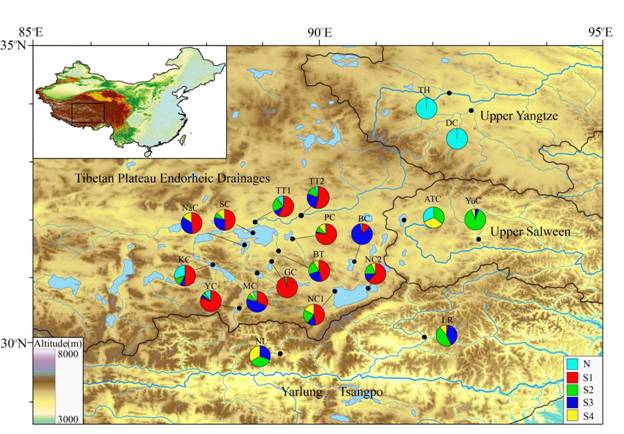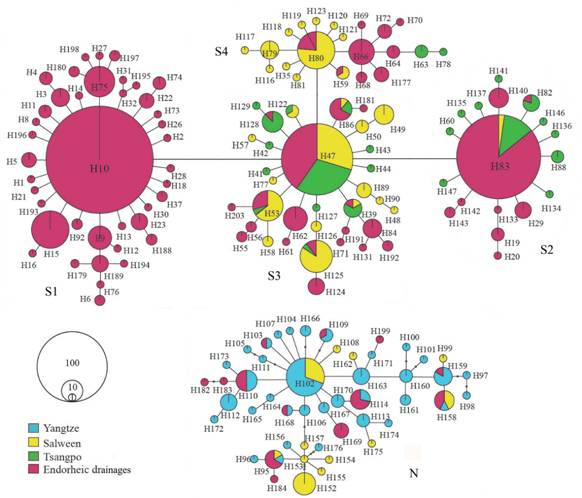
Newsroom
Phylogeographic Studies of Schizothoracine Fishes on Central Qinghai-Tibet Plateau Reveal Highest Known Glacial Microrefugia
The advances and retreats of glaciations through the Pleistocene, especially most recent the Last Glacial Maximum (19-26 thousand years ago), have significantly affected the demographic history, abundance and distribution pattern of modern species. During these glaciations, many species were excluded from large parts of their ranges and forced into refugia by the expanding ice sheets, followed by recolonization and population expansion as the glaciers retreated
The Qinghai-Tibet Plateau and adjacent mountains are the largest glaciated tracks outside the polar region. Freshwater fishes are regarded as the ideal subjects to explore the effects of glaciations because of their restriction in glacial refugia that are peripheral to ice sheets and the restrictive aquatic requirements for postglacial dispersal. To investigate the effects of past climatic shifts, particularly the Last Glacial Maximum, on plateau fish, the research group of Biological Invasion and Adaptive Evolution (PI: Yifeng CHEN) analyzed the phylogeographic structure and demographic history of five closely related taxa of the subfamily Schizothoracinae, a representative endemic taxon of the Qinghai-Tibet Plateau , from nine endorheic lakes on the central Qinghai-Tibet Plateau and three peripheral exorheic rivers using the mitochondrial control region (D-loop) sequence and 12 microsatellite markers.
The results showed that endorheic populations possess high genetic diversity and a unique genetic structure. For all endorheic lakes, the most interior Siling Co harboured the highest genetic diversity and all four ancestral haplotypes. Besides, the most recent population growth of Siling Co began approximately 100 kya, corresponding to the last interglacial period and much earlier than other endorheic lakes. Phylogeographic structure, together with species distribution modelling, supports the scenario of multiple glacial refugia on the Qinghai-Tibet Plateau during the LGM and suggests that Siling Co (4540 m asl) is a cryptic glacial microrefugia for plateau fish, which would be the highest glacial microrefugia known.
This research was supported by the Natural Science Foundation of China (Nos 41030208, 31572248), the Strategic Priority Research Program and the Knowledge Innovation Project of the Chinese Academy of Sciences (Nos XDPB020403, KSCX2-YW-Z-1023), and the National Science and Technology Basic Special (Nos 2014FY210700, 2014FY210200). This work was published online recently in Scientific Reports entitled “Phylogeographic studies of schizothoracine fishes on the central Qinghai-Tibet Plateau reveal the highest known glacial microrefugia”.

Figure 1: Location and haploclade composition of each sampling site in this study. Five colours (cyan, red, green, blue and yellow) correspond to one North lineage (N1) and four South sublineages (S1, S2, S3 and S4) in the D-loop phylogram, respectively. (Figure by IHB)

Figure 2: Median-joining network of mitochondrial D-loop haplotypes for the five taxa of schizothoracine fish in this study. (Figure by IHB)